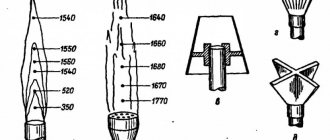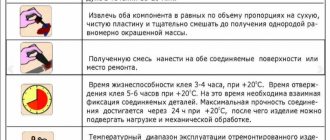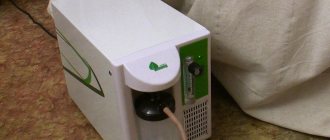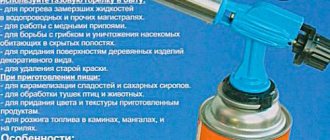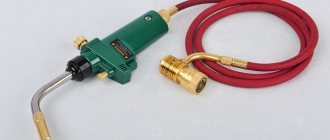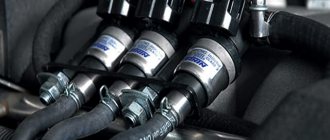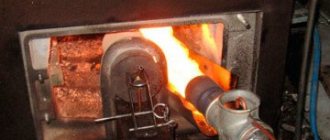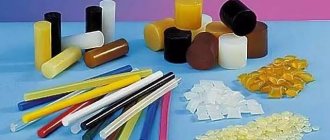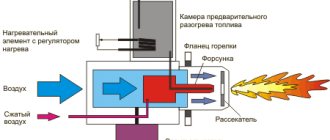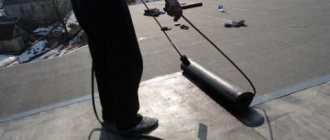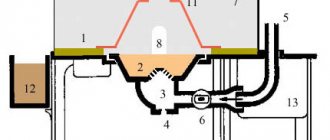December 17, 2015
Gas burners are an indispensable assistant in the household, workshops and production shops, on a picnic and on hikes. Ease and ease of use have long given the primacy to gas appliances over other types. When choosing a burner, you should take into account the scope of application, the required power, as well as the maximum flame temperature. The last factor is especially important when performing more delicate types of work. Therefore, it is necessary to know the basic parameters directly related to the temperature distribution of the gas burner flame.
What determines the temperature of a gas burner flame?
A gas burner in a can and the flame temperature in it directly depends on the composition of the gas fuel, the ambient combustion conditions and the power of the equipment used. In this case, a direct relationship is observed between the calorific value of the gas and the temperature of the flame torch - an increase in the first indicator leads to an increase in the second.
When the process of mixing the fuel used with air occurs, the gas is completely consumed, which in turn increases the burning rate and increases the flame temperature. This indicator can be improved through additional use of air blast. For example, without the use of blowing, the maximum temperature regime is 1500 °C, but when using it, results up to 2200 °C are possible.
The temperature is also affected by the flame pattern. It is not homogeneous and is divided into three zones:
- internal - is the shortest and has the lowest temperature indicators. It is in it that the gas mixture is heated, but without combustion;
- The average reduction zone is the so-called light fire zone, in which the highest temperature is reached. Combustion already occurs here, but not at full power, due to the lack of oxygen and the presence of carbonaceous gas decomposition products;
- bordering - characterized by the lightest flame, is oxidizing. The temperature of this zone is also high and due to excess air, complete combustion of the gas occurs.
Operating principle and features
The user receives an even torch, the power of which is controlled by a special valve.
Due to this, the temperature at which it heats up changes depending on the thickness of the material and the tasks being pursued. The device is more cost-effective for welding and cutting than massive, expensive equipment.
The range of uses is so wide that the product is even used for disinfecting wooden hives, treating animal cages, roofing, and so on..
The burner is ignited with matches, a lighter or an open fire source. This option is cheaper than models with installed piezo ignition. This element leads to combustion after pressing the button, which provokes the appearance of a spark, which ignites the gas jet.
According to the principle of operation, the piezoelectric element resembles a familiar lighter.
High temperature lamps
- There are devices where MAPP gas is used instead of a propane-butane mixture. The flame temperature in these devices is 2200−2400°C. The main energy is concentrated in a cone, which is quite stable and has a pronounced boundary.
- Such products are used for heating, bending and forging massive parts and high-carbon steels. High temperature allows for better tempering and hardening of metal.
- As for welding and soldering, MAPP gas devices do an excellent job with stainless steel, and even thin parts do not overheat. Another advantage of MAPP is its low boiling point, which allows it to be used at temperatures of -20°C even in products without a heating circuit.
Kinds
A burner is a popular tool, so developers strive to improve the design and increase functionality. The market offers several types of such equipment:
- Gas soldering iron.
- Cutter.
- Burner for tourism.
- Blowtorch.
A blowtorch is one of the types of burners . Shows high temperature and is used for processing metal, plastic and other durable materials.
Each type differs in appearance (design, color , packaging) and purpose.
These features are taken into account before purchasing, since this directly determines the final result of processing and ease of use.
Briefly about the power of the burners and stove
The total power of the working surface depends on the number of burners and their direct power, indicated in the equipment passport. The average for one burner is 2-2.5 kW. With decent gas quality and normal pressure in the line, this value is quite enough for comfortable and relatively quick heat treatment of products. In this case, the maximum power of the burner is determined when the regulator is turned to the maximum and gas is fully supplied.
Manufacturers often offer household hobs, the burners of which have different power ratings:
- on small ones - 0.7-1.2 kW;
- on average - 1.3-1.8 kW;
- on large ones - up to 4 kW and more.
Such a technological solution is quite logical and convenient: it makes no sense to brew coffee in a Turk on a powerful WOK burner or try to boil a large volume of water on a small one. Choosing different capacities allows you to save gas, and if the room temperature is maintained using an air conditioner, you can also save electricity.
When using powerful burners, the air warms up more due to heat transfer, so climate control equipment will need more resources for cooling
Thus, the acceptable parameters for the calorific value of the gas used by a hob from the middle price segment, consisting of 4 burners, is 8-10 kW. More budget models usually have a total power of 5-7 kW.
Cooking surfaces with a high calorific value for normal safe operation may require the installation of a separate chimney or the installation of a heavy-duty hood. However, for home use, purchasing such models is not always advisable.
Gas stoves with two- and three-circuit burners are especially popular. The so-called double or triple “crown” is a powerful burner in which the flame is produced not in one row, but in several circles. This device allows you to cook faster and heat dishes more evenly.
What does it depend on?
The burner temperature is determined by the chemical composition of the gas and the power of the product. During the research, it was possible to establish that the temperature parameters of the torch depend on the calorific properties of the gas mixture.
After combining the fuel with air, the gas is consumed critically, so the combustion intensity increases. By using an additional air source, you can increase the temperature you get at the burner. Without blowing, the value reaches 1500 degrees; access to auxiliary air flow gives an increase of up to 2200 degrees. The temperature differs in different parts of the torch :
- Internal . This is a short zone with little heating.
- Average . In this area, the temperature of the flame from the gas burner reaches its limit, but the fire does not open completely, which is due to a lack of oxygen and the release of decay products.
- Bordering . Visually characterized by a bright fire with high efficiency.
Cheap burner models are structurally the same. Expensive ones are equipped with additional elements that increase technical characteristics and ease of use.
To perform welding and cutting, special requirements are placed on the composition of the gas mixture, since the temperature regime of the product depends on it.
Dependence of temperature on fuel type
For domestic needs, two types of gas are used: natural and liquefied. Both of them are a transparent, explosive substance without color or odor. Therefore, to increase safety and the possibility of instant leak detection, ethyl mercaptan is added to the gas - a substance whose tart smell is felt by a person when he opens the gas tap. According to its chemical composition, natural gas consists of 98% methane and 2% of impurities that are represented sulfur, nitrogen and carbon dioxide.
In private homes, dachas and in areas not equipped with a main gas pipeline, liquefied bottled gas is used. For this, two types of mixture are used: propane-butane with a ratio of 65/35 and butane-propane prepared in a ratio of 85/15. The flame temperature of bottled gas is slightly lower than that of natural gas, and never exceeds 1000 degrees.
Due to the difference in temperatures, each gas has its own gas equipment. However, many manufacturers of gas stoves running on natural gas equip them with jets and reducers necessary to convert the stove to bottled gas. If the stove is connected to a cylinder without these important devices, the burner will begin to emit a huge amount of soot and constantly go out.
In this case, you will need to immediately contact the gas service and under no circumstances switch the stove to another type of gas yourself.
Temperature conditions of different types of burners per cylinder
You can purchase a burner online or at a hardware store. It is better to give preference to the second option, since the buyer can consult with an experienced seller, he will select the appropriate option depending on the tasks set by the user. The product range includes models that differ in temperature conditions:
- Refillable. They are characterized by small dimensions and thoughtful shape, as well as ease of use and a piezoelectric element. This type does not apply to the cylinder variety of gas burners.
- On a collet can. They are a source of powerful flame with an average outlet temperature of 1500 degrees.
- Threaded. Propane accounts for the lion's share of the fuel, due to which the temperature in the combustion zone is 1800 degrees. Advanced models are equipped with systems for mixing air with a propane mixture.
Some burners are equipped with autonomous heating of the combustible mixture, which increases the angle of use.
Important! The average gas consumption is 125 g/hour, the indicator is determined by the type of device and the required temperature.
Gas combustion temperature under different modes in a gas stove
Let's find out what gas is used in household appliances - stoves and boilers for heating systems, as well as its properties.
Gas is the most common energy resource used for cooking, heating water and heating buildings. The amount of heat released during its combustion is considered an important technical parameter of this fuel, and also determines the ease of use of one or another gas equipment and fuel consumption for various purposes.
Highest flame temperature
This indicator determines the cutting speed of the material and is determined by the properties of the gas-air mixture and the type of fuel. A high value is guaranteed by acetylene; the substance rapidly heats the metal to melt . At the tip of the fire the temperature reaches about 3000 degrees. The farther from this point, the smaller the number.
Welder of the highest category of Progress LLC Degtyarenko V.O: “The increased temperature of the torch also has negative consequences: melting of some of the edges of the workpiece. For this reason, acetylene does not produce the same cutting quality as kerosene or gasoline vapors.”
The difference between propane and methane
Among the distinctive features of propane it is worth noting:
- higher combustion efficiency, making it much more efficient than methane during welding;
- high inertness of the gas, which allows it to more actively enter into various chemical reactions;
- propane is safer than methane and has a narcotic effect;
- When transporting propane, you do not need to use any special equipment; ordinary steel cylinders are sufficient.
In addition, propane is cheaper and easier to refill.
Adjustment
The cleanliness of the cut depends on the correct flame setting . Oxygen treatment is carried out with a slightly oxidized or normal torch. The carefully adjusted flame of cutters with concentric nozzles is surrounded by a cutting stream of oxygen. The core of the torch in each section should be symmetrical and not differ in brightness.
Cutting with a torch with the mouthpiece moved cannot be carried out, as this will lead to heating of the edge, which will negatively affect the quality of the cut. The use of self-centering mouthpieces increases the ease of use of such equipment, because the device makes the flame symmetrical.
Sometimes the movement of the gas mixture is hampered due to clogging of the channel, which divides the torch into streams and leads to loss of stability. Such a product not only reduces the quality of processing, but also reduces productivity. Flame adjustment is based on creating a symmetrical flame of the required power in relation to the oxygen cutting jet.
Important! The installed combustion power is determined by the thickness of the material.
A normal flame is ensured with the valves slightly open, which makes it possible to make adjustments during operation. When acetylene and oxygen are fully open, an excessive amount of the former is observed. Smooth closing of the acetylene valve leads to stabilization of the process.
Goods for tourism and active recreation
It is much more economical than electric stoves or other modern household appliances for the kitchen. How high the temperature will be in the flame of a gas stove directly depends on the quality of the mixture used to operate the device. There are several types of natural fuels.
Among them:. Important: before buying a gas stove, you need to check its equipment, and whether there are special jets that can ensure the correct operation of the nozzle in the desired mode.
If the equipment was initially purchased for one type of gas, but during operation it needs to be changed, then you need to check whether the kit includes additional parts that will help to correctly install the equipment. Violations during installation of even the smallest and seemingly insignificant part can lead to improper operation of the gas stove. For example, it will start to smoke heavily, or the fire will constantly go out.
Recommendations for work
Gas burners function as an autonomous source of large thermal energy . By regulating power and adjusting temperature conditions, the scope of application of the device is significantly expanded, it includes:
- processing of fusible metals (burning, calcination, heating) - using a directional torch with a temperature of at least 1500 degrees;
- working with wood - creating patterns, firing finished products;
- tourist purposes - you can give preference to compact models with low temperature parameters.
When using a gas burner, it must be taken into account that a lack of oxygen leads to heat losses and the accumulation of decomposition products from the combustion of the gas mixture. These phenomena provoke the appearance of soot and excessive glow, which affects the quality of cutting, welding, and melting.
Technical propane: properties
Among the main parameters of the substance, it is worth noting the following:
- the sum of propylene and propane is at least 75% of the total volume (the amount of the latter is not standardized);
- the amount of butanes and unsaturated hydrocarbons is not standardized;
- the amount of liquid residue should not exceed 0.7% vol.;
- the saturated vapor pressure at a temperature of – 20 ◦C must be at least 0.16 MPa;
- the amount of hydrogen sulfide and mercaptan sulfur should not exceed 0.013% of the total volume;
- The intensity of the propane odor should exceed 3 points.
The minimum combustion temperature for propane is – 35 °C. Thanks to this, you can work with gas in any conditions. Propane ignites spontaneously at normal atmospheric pressure at a temperature of 466 °C. At 97 °C the critical temperature of propane occurs. The combustion temperature of propane-butane ranges from 800 to 1970 °C, the combustion flame of pure propane has a temperature of about 2526 °C, and the heat output, on average, is 2110 °C. In gas cutters, when mixed with oxygen from 1:4 to 1:5 (propane:oxygen), a flame temperature of up to 2830 °C occurs.
General classification of gas burners by fuel type
Country houses cannot always be supplied with natural gas supplied from a public main.
Therefore, the burners are varied in terms of using different types of fuel. If the fuel comes from the gas main, propane-butane gas burners are most likely used for heating boilers. Trunk methane gas is the most affordable natural fuel for boilers. However, now there is no big benefit in the price of liquefied blue fuel (propane-butane mixture). General heating provided by the main pipeline is also expensive.
Gas boilers operating on different types of fuel mixtures have approximately the same design. There is a slight difference in cost, but it is also insignificant (equipment for liquefied fuel will cost more). The burners themselves are slightly different, having different nozzles for liquid fuel and blue gas.
If natural gas is not supplied to the house, propane-butane gas burners are used
Propane burners require adjustment to this type of fuel with the installation of a nozzle. When burning, the flames give off a yellowish color, and more soot accumulates in the chimney. The jet is responsible for normalizing pressure.
Modern burners operate in a wide temperature range – from -50 to +50 °C. Some equipment can be adapted for other types of energy carriers:
- used oil;
- diesel fuel;
- fuel oil;
- kerosene;
- propane butane base;
- Arctic diesel fuel.
Modern devices often include both types of injectors or universal equipment for fuel types, making them easy to reconfigure.
Homemade gas burners are most often used in solid fuel boilers
It is safer to purchase simple gas equipment adapted for bottled gas. Homemade equipment, although more affordable, is unsafe! Usually, “reworks” are carried out on the basis of old units.
Turbocharged types of gas burners and their design differences
Among modern gas equipment, many experts prefer closed-type burners for turbocharged boilers. They are self-sufficient in design and require a compact chimney, which can even be diverted into general ventilation during autonomous heating.
A heating unit with a special closed-type combustion chamber receives oxygen from the outside - through a special supply pipe (coaxial chimney). Combustion products are removed approximately in the same way. The heating equipment is controlled by a fairly powerful automatic fan.
Fan gas burners also have a drawback - the price, due to the complex design of the product
Such a device is much more expensive than atmospheric heating equipment. However, for an additional fee, the buyer receives a number of advantages, including autonomous operation in a residential area. This device, thanks to automatic control, has a high level of safety.
Turbocharged equipment has the highest efficiency and flexible temperature scheme
The fuel burns almost completely, which is important for environmental performance. There are also disadvantages, including design complexity, which causes difficulties during installation and repair
Gas burners for combined equipment are most often used in solid fuel boilers. This is a rather complex unit, so all components must meet certain efficiency and safety requirements. The automatic device is capable of switching from one type of fuel to another for uninterrupted heat supply. Pellet and pyrolysis boilers are designed according to this principle, equipped with gas for burners that drives the ignition process.
Selection of burners for different types and models of boilers
When choosing a burner, you should pay attention to its various characteristics - the fuel supply model, the option of mixing gas with air, compatibility with various categories of devices. We will tell you about the most interesting models
KChM burner. It is used in boiler units converted from conventional fuel to LNG or conventional gas. It usually has automation and has three nozzles. It is used in boiler units of the “Contour” model or similar options.
- Burner "Hearth". It is a pneumomechanical type device with an automatic operating mode. It turns off on its own if:
- the fire went out;
- gas supply stopped;
- there is no necessary traction.
This model has a gas pressure controller. This makes it possible to achieve equal burning of the fire, even if any malfunction occurs in the mechanism. Such solutions are easy to maintain due to the fact that soot does not accumulate in the convective part.
- Another burner that I would like to talk about is the “Kupper” model. This option is universal and is suitable for combined boilers, solid fuel designs from Kiturami or Russian-made models of the Conord brand. The advantage of this burner will also be the ability to install it without plumbing or welding.
- Another fairly popular solution is the DKVR burner. This block device is used where there is forced air supply. This solution is used for steam boilers for industrial use and having the appropriate power. Their efficiency is about 94-95 percent. A similar design works either in a diffusion or in an inflatable version. To increase its efficiency, powerful Italian fans are often used.
Another category is burners for KVS. They are used for domestic needs and are solid fuel. Considering that there is no need to use overly powerful equipment to heat rooms, atmospheric or injection solutions are used
When selecting a burner element, you should pay attention to power and safety in use
Heater Maintenance
Maintenance of an infrared gas heater, like any other equipment, must be carried out at certain intervals. This will help avoid malfunctions during operation of the device.
A large layer of dirt increases thermal insulation, which significantly reduces the effect of heat waves transmitted by the heater into the space being treated. As a result, operating efficiency decreases, which negatively affects the functioning of the unit.
Manufacturers indicate the need and regularity of cleaning in the instructions for the device. This usually needs to be done once a year or as needed. In this case, be sure to turn off the device and wait until it cools down.
Placing the heater in close proximity to a wall may cause the device to overheat and melt plastic parts. Plastic covers heat sensors and causes disruption of thermoregulation. It is necessary to restore not only the housing, but also the sensor
Cleaning is carried out using a damp cloth, which must be soaked in soapy water. This way you can wash the heater body and the location of the cylinder with the gas mixture. Difficult stains can be removed using chemicals and brushes.
Compressed air is usually used to clean the inside of the heater whenever possible. A stream of air should be passed over the surfaces of the burner and ceramic plates until completely clean. The procedure must be carried out carefully so as not to damage the fragile structure of the ceramic parts.
The spark gap and burner openings are also cleaned using compressed air.
After cleaning the device, you need to wipe it dry. The burner and spark gap area must be dry before starting.
It is unacceptable to clean using an abrasive method. Blasting can cause serious damage to the finish of the equipment, resulting in malfunctions
Before reusing the heater again, you need to check the equipment connections for leaks. All connections of the pipeline supplying gas to the device and gas hoses are checked using a soap solution.
If a leak is detected, the device must not be started. Before starting, you must ensure that the leak has been repaired.
Carrying out preventive cleaning of the device and its inspection will help to significantly extend its service life.
Adjusting the flame on the stove burners
It is necessary to debug the normal operation of the burner in cases where the flame loses its efficiency and quality. Setting up a gas stove should also be done by a specialist. But understanding the algorithm of this process will be useful for any user.
First, it’s worth understanding what a properly burning stove flame looks like. The fire should be blue. An intense bright blue glow is a sure sign that the stove is working correctly and does not need debugging. A yellow, orange or red flame indicates an incorrect composition of the combustible mixture. In this case, there is clearly not enough air; its flow must be increased.
Sparks and flame separation are another sign of insufficient air in the fuel mixture for the burner. The composition is corrected by working with a special screw
To change the gas-air mixture entering the burner, it is necessary to adjust the operation of the air dampers, which are usually located near each burner.
Direct setup goes like this:
- after disconnecting the stove from the gas system, it is necessary to gain access to the adjustment mechanisms under a special partition or in the gas control knob;
- the stove is reconnected to the main line, gas is supplied alternately to each burner;
- the volume of air entering the mixer is adjusted by turning a special screw;
- As soon as the flame in each burner acquires the correct color, you can turn off the stove again, reassemble it and connect it to the main line.
When setting up the stove, you may need to work with the gas control valve and its thermocouple. If the flame regularly goes out at a minimum fuel supply level, perhaps the problem lies in the gas control. The operating principle of this option is based on a special sensor that responds to the energy released during the combustion process. If the flame goes out unexpectedly, the thermocouple sensor cools down, signaling the gas supply to stop.
The simple operation of a small sensor can prevent terrible consequences. Therefore, the working surface of the stove and its parts must be kept clean.
However, oxidation processes and a decrease in the sensitivity of the sensor due to the ingress of liquids or the formation of deposits from food deposits can provoke incorrect gas shutoff outside of an emergency situation. Therefore, both the stove and this block should be kept clean, and if necessary, call a professional to clean it.
If you are faced with unusually noisy operation of the burner, we recommend that you find out the cause of the noise of the burner and how to eliminate it.
flame Setting the gas burner
In order to properly set up the burner of a gas boiler, you must first of all follow the operating instructions for the gas appliance. Let's talk further about how to properly start and set up a gas burner, and in what cases flame adjustment is necessary. But first things first.
Features of the boiler settings burner
It is recommended to adjust the flame using a burner gas analyzer. It shows information about the amount of air mixed with gas, namely the level of oxygen involved in the process, and the amount of CO.
As a rule, CO should be no more than 50 ppm, oxygen concentration should be approximately 3 to 5%. If it is less, then most likely the gas will not have time to burn, as a result of which a lot of soot will accumulate, the CO2 level will be higher than the efficiency, and equipment standards will decrease.
If there is more air than normal, then the temperature of the household gas burner of the boiler will be too high, and this can lead to tragic consequences, including an explosion.
To ensure maximum equipment performance, ensure that the gas burner flame is blue. If it is yellow, blue or orange, it means that it is necessary to do the opposite; in this case, the gas will burn without leaving a lot of soot. This in turn will lead to damage to the device.
The flame in the gas burner should be blue. If you find that the color has an orange tint, try it, which means reducing the amount of gas. Reduce until the color becomes blue (color). This color is a sign of optimal gas operation of the device. The main thing is not to reduce the fuel supply until the moment when the flame becomes almost colorless. In this case, it will go out very quickly.
Setting the starting gas supply is only necessary during ignition and does not affect the performance of the device. But depending on the need, it is possible to adjust For. its beginning, the starting fuel supply should be reduced. Reduce until the burner stops turning on. After this, you can turn the regulator until the ignition is no more. will resume in detail about setting the flame of a household gas burner, you can watch in the video at the end of this article.
We also recommend that you familiarize yourself with the intricacies of gas boiler adjustment.
When adjustment is necessary Gas
flame? An atmospheric burner, which does not have a built-in fan, very often fails; a turbocharged burner breaks down much less often. During long-term operation of the device, its components may break or stop working at full capacity.
A floor-standing gas boiler takes up useful space in your room, so such heating systems are suitable for private homes more often. In all houses, a special room is allocated for such devices - a boiler room, in which wall-mounted units are installed. boiler boilers save space, so they are installed preferably in apartments or houses with small For example
area, the efficiency indicators of a gas boiler may decrease or a decrease may be observed.
And the flame may occur for the following reasons:
- power Large burner installed for equipment intended for less powerful burners. In this case, there is not enough space for proper combustion of fuel, the fuel burns unevenly, which leads to soot quickly accumulating on equipment parts.
- A lot of soot in the chimney can have a bad effect on the draft of a gas boiler. Because of this, the output of subsequent combustion products is very weak, little air enters, and the flame becomes yellow.
- The color of the burner defects is one of the reasons for the efficiency of the boiler, but in this case, the adjustment will help the flame not to correct the problem.
- Gas supply pressure differences can also contribute to the formation of soot and deposits, and this will significantly reduce equipment productivity.
All these reasons can affect the temperature of the flame in the gas burner, in which case repairs will be required.
Wall-mounted heating boilers and gas water heaters are installed, most often, in apartment buildings. But at home they may need to adjust the flame. Recommendations
OCCUPATIONAL SAFETY REQUIREMENTS BEFORE STARTING WORK
2.1. Before starting work, you should put in order and put on overalls, safety shoes, and, if necessary, check the availability and prepare other personal protective equipment. Overalls must be of the appropriate size, clean and not restrict movement. 2.2. Before work, you need to select the tools and technological equipment necessary to complete the work, check their serviceability, tools and materials must be located in a convenient place, taking into account the technological sequence of their use. 2.3. When preparing a gas cylinder for operation, it is necessary to remove the steel cap and plug from the valve using a non-ferrous metal wrench, inspect the fittings, if necessary, remove dirt and blow out the valve by quickly turning the flywheel (open-close). 2.4. If the cap cannot be removed, the cylinder is considered faulty and must be sent to a warehouse. 2.5. Before starting work, it is necessary to check the gas burner, since a clogged nozzle can cause an intermittent flame, “backfire”, or gas leakage at the connections of the hoses to the burner and to the cylinder. 2.6. All tools and devices for performing work must be in good condition; Defects discovered during the inspection must be eliminated; if it is impossible to eliminate the defects on your own, no work can be done. 2.7. Before starting work, it is necessary to carefully inspect the work site, put it in order, remove all foreign objects and, if necessary, install protective barriers. 2.8. You should not start work in case of the following violations of safety requirements: - in case of malfunctions of the tools used, technological equipment, or protective equipment for workers; — in case of insufficient illumination of the workplace and approaches to it. 2.9. The employee must personally ensure that all measures necessary to ensure safety are completed. 2.10. An employee should not start work if he has doubts about ensuring safety when performing the upcoming work.
Conclusions and useful video on the topic
The operation of a burner without a divider and the potential size of the flame when cooking directly from the burner is presented in the following video:
An example of the operation of jets for bottled gas in a hob connected to the main gas pipeline is clearly shown in the following video. After replacing the injectors, the flame becomes almost perfect:
Interfering with the design of a gas burner is an unacceptable and risky idea. Residents of apartment buildings must be especially responsible, because in the event of an accident, not only their own lives are at stake, but also the fates of all neighbors. Approach the choice of equipment seriously, calculating in advance the power of the equipment necessary for comfort, so that after purchase there is no need for dangerous and unjustified modification.
Would you like to share your experience of increasing the power of the burner? Tell us about it in the comments block, join the discussion - we and our readers are interested in your opinion.
If you still have questions, do not hesitate to ask our experts and other site visitors - the feedback block is located below the article.
